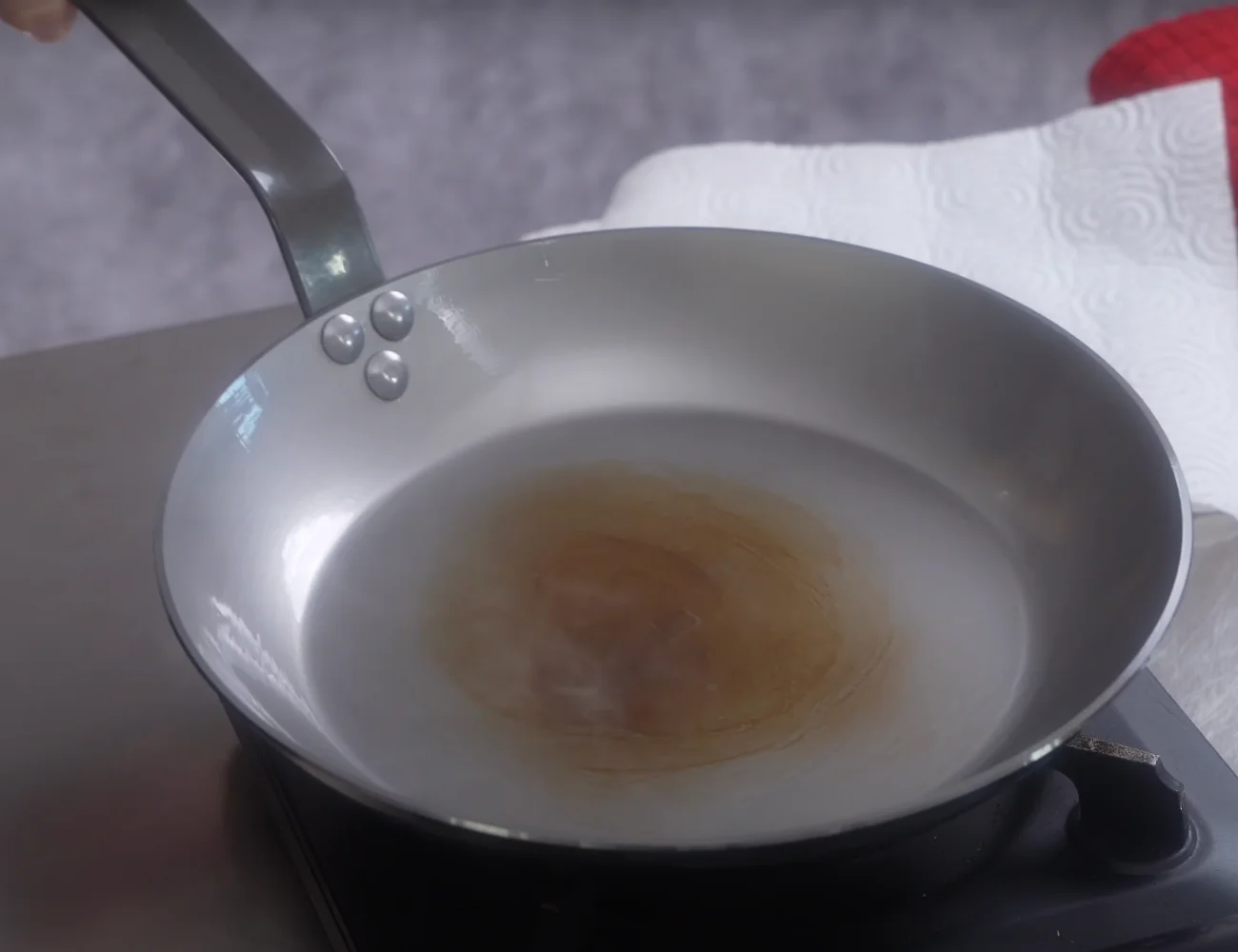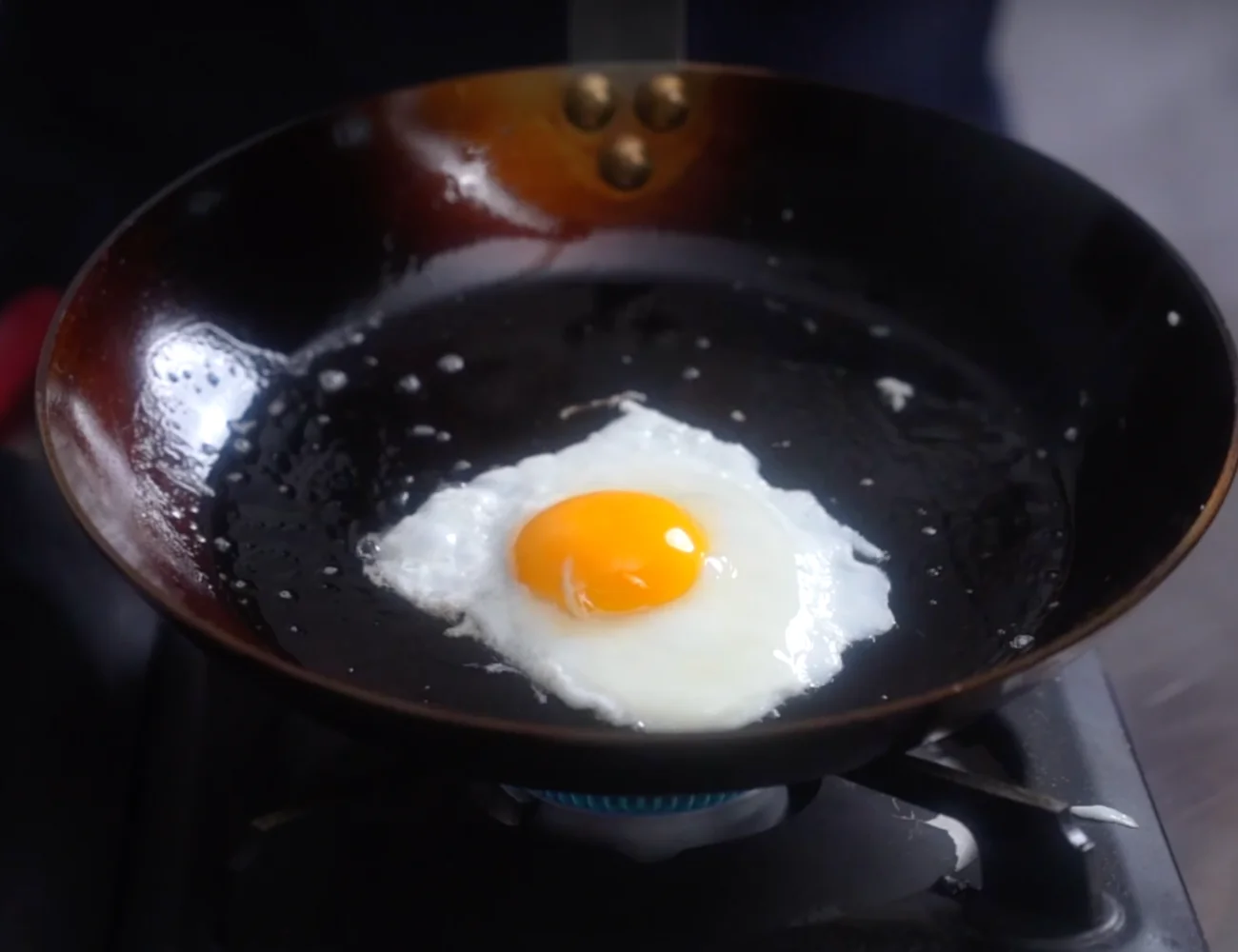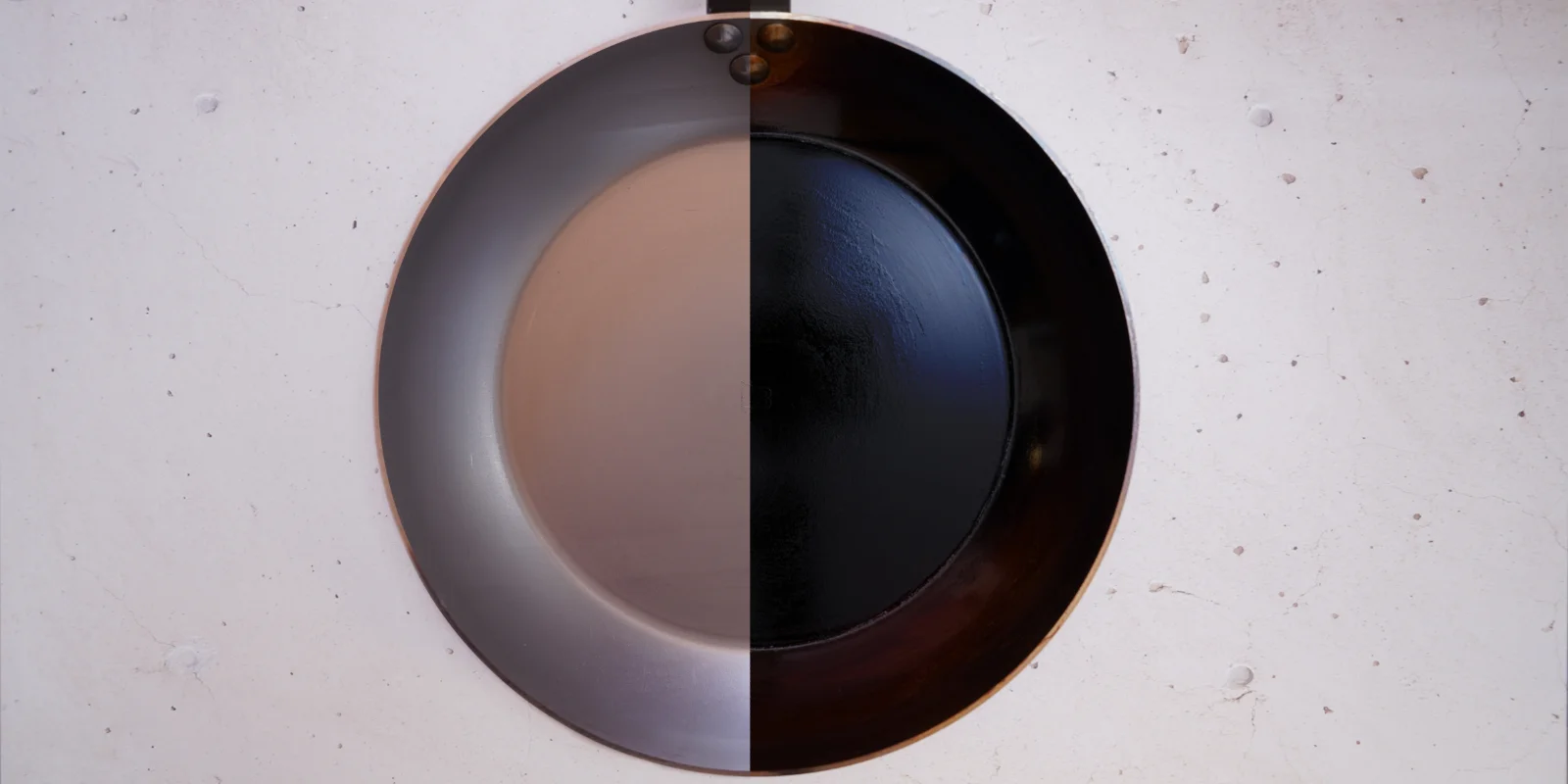If you’ve ever wondered how to season a cast iron skillet or carbon steel pan, you’ve come to the right place! There are many excellent reasons to treat or ‘season’ a cast iron pan or carbon steel skillet, but the most useful is that you’ll end up with a lovely slick, naturally non-stick surface to cook with.
Below, you’ll see a photo of the same carbon steel pan before seasoning (left) and after seasoning (right). See how much the color changes after seasoning?
Watch the Video Recipe!
Learn how to season a cast iron skillet or carbon steel pan in this video:
Subscribe to our YouTube Channel
More video recipes and how-to videos? Subscribe to our YouTube Channel (it’s FREE) and click the bell to get notifications when we release a new video recipe!
How to Season a Cast Iron or Carbon Steel Pan
Most pans you purchase will come with manufacturer instructions for how to season the pan. Nonetheless, in our experience this instructions aren’t very clear. Plus, a picture is worth a thousands words which is why we’ve done an extensive video tutorial on this subject.
The basics of seasoning a carbon steel or cast iron pan are:
Remove the Factory ‘Film’
On the pan we seasoned for this tutorial, we followed the manufacturer instructions to remove the factory film that was on the pan. We simply poured boiling water into the pan and wiped the pan down with a soft, clean sponge. Then, we discarded the water and repeated the process 3-4 times.
You’ll also want to use boiling water to ‘wash’ the outside of the pan with the sponge. We will be seasoning the outside of the pan as well to protect it.
Prepare Oil + Cloths
To season a cast iron skillet or carbon steel pan, you’ll need the following:
- oil with a high smoke point (peanut, sunflower, flaxseed- we chose peanut!)
- pieces of heavy paper towel or cotton cloth
- a heat source (gas stove, camping stove, or oven work best) – we don’t recommend induction
- heat-safe gloves (if you need them)
- tongs or chopsticks to move the towel or cloth around (if needed)
Seasoning Cast Iron or Carbon Steel: Process
Coat the pan inside and out with a generous amount of oil (few teaspoons). Place the pan over medium-high heat until the oil begins to smoke.
Quickly (and carefully) wipe away all of the excess oil on the pan with paper towel or a cotton cloth until only a thin layer of oil remains. Heat that oil until the smoking stops.

Continue the process until the entire pan has been treated. In the case of a carbon steel skillet, the entire pan should turn a black color with a glossy, mirror-like finish!

Pan Seasoning Tips
Season in a Well-Ventilated Area: This process inevitably produces a lot of smoke! It’s best to do it inside with all of the windows open and a fan going. Or, consider seasoning your pan outside over a camping stove or grill.
Very Thin Film of Oil! The biggest mistake that people make in seasoning is leaving too much oil on the pan during each ‘coat.’ It’s oil to add more oil than you need to spread it evenly. However, then you need to immediately wipe away all of the excess, leaving only a thin, thin coat of oil on the pan to cure.
Distribute the Oil Well: Another common mistake? Not distributing the oil well enough! Be sure to distribute the oil well and (again) wipe off all excess. This will ensure you end up with a smooth, evenly seasoned surface at the end of the process.
As an Amazon Associate, we earn from qualifying purchases. This means at no extra cost to you, PIATTO may earn a small commission if you click the links and make a qualifying purchase.
